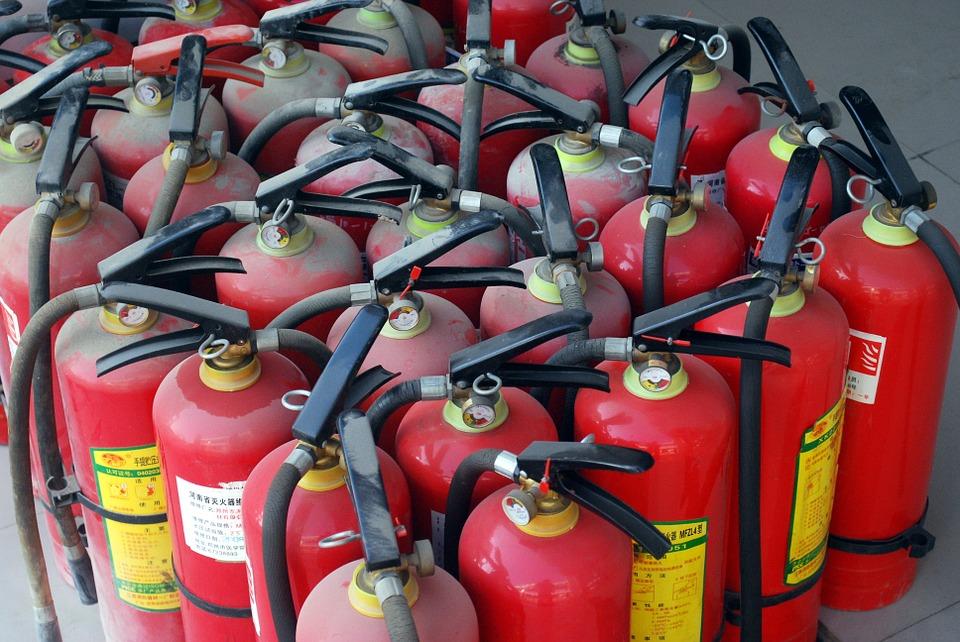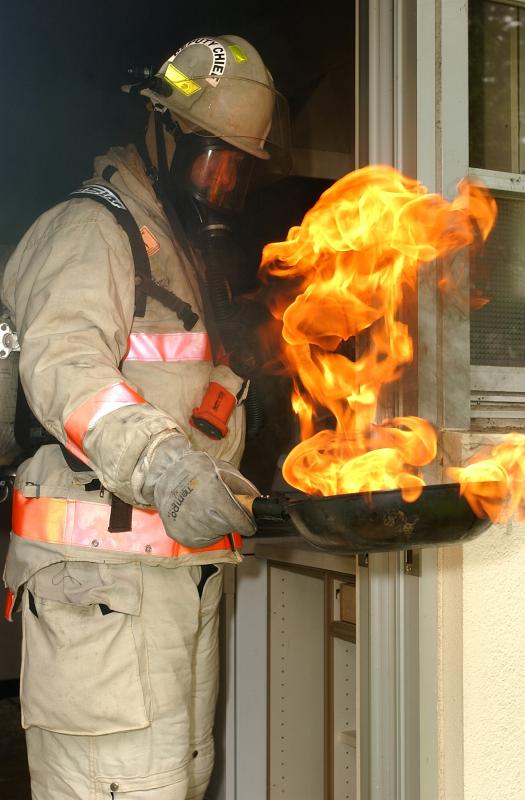Winter is here, and that means holiday decorations, a warm hearth, and (hopefully) plenty of homecooked meals. Unfortunately, winter also brings numerous fire hazards both at work and around the house. This year, as you shop, decorate, and celebrate, keep these safety tips in mind to ensure a safe and enjoyable holiday season.
Staying Safe at Work
The main fire safety concerns at work involve cooking fires, combustible materials near a heat source, holiday decorations that are in poor condition, and overloaded electrical circuits (for instance, ones with more strands of lights plugged in than what the circuit was designed for).
Perhaps not surprisingly, cooking is the number one cause of fire-related injuries. Here are a few tips to reduce the likelihood of a fire in the kitchen:
- Stay in the kitchen when cooking, especially when frying, grilling, or using an open flame. Keep a large lid or cookie sheet handy to smother flare ups.
- Avoid wearing loose clothing or dangling sleeves while cooking.
- Clean cooking surfaces on a regular basis to prevent grease buildup, and check the kitchen before going to bed or leaving home to make sure all stoves, ovens, and small appliances are off.
- Keep anything that can catch fire away from cooking areas and any appliances that generate heat.
Temperature control is never perfect, especially in the winter, and employees are allowed to use space heaters in their offices—but they must be purchased by NCI at Frederick and pre-approved by Environment, Health and Safety (EHS) Fire Safety. Individually supplied space heaters are never approved, and space heaters are prohibited in all laboratories.
For more specific regulations regarding space heaters, please visit the Office Safety page on the EHS website, and look for item number five (portable space heaters) under the “Fire and Electrical” section of Appendix A.
Staying Safe at Home
Many of the same fire risks exist at home, but one big difference stands out: Christmas trees.
Dried out, naturally cut Christmas trees are an extreme fire hazard and lead to fires that can consume an entire room within minutes. This makes conditions in the house untenable very rapidly.
To prevent such fires, add water to the tree stand daily and monitor the tree for dryness; make sure your tree is at least three feet away from heat sources like fireplaces, radiators, space heaters, candles, or heat vents; and make sure that your tree doesn’t block exits.
Space Heaters
Buy a heater that is listed to UL 1278 or an equivalent testing laboratory (FM, ETL, etc.). Choose a product that has an internal thermostat (to keep the unit from overheating), as well as tip-over protection. Finally, keep the heater at least three feet away from all combustible objects.
Electric Blankets/Bedding
When used in accordance with the manufacturer’s recommendations, most electric blankets are relatively “safe.” However, always read the manual first.
Here are a few other tips to consider when using an electric blanket:
- Avoid any damage to the electrical wiring in the blanket, such as sharp bends or cuts, and discard the blanket if the wiring is damaged.
- Never run the control cord between the mattress and the box spring. The cord could become damaged by friction, or the heat from the electricity in the cord could become trapped with no place to escape, eventually creating a fire hazard.
- Don’t allow pets near the electric blanket. A sharp claw or tooth may puncture the wire insulation or damage the wiring itself.
- Turn off the blanket when not in use.
- Never dry clean or use cleaning fluid on your product. Dry cleaning solvents may damage the heater wire insulation.
- If the electric blanket is operating improperly (e.g., seems too hot in one area or you see a scorch mark), call the manufacturer.
Candles
Many people enjoy lighting candles during the holiday season, but they can be a serious hazard. To avoid a fire, never leave open flames unattended. Place candles on a non-combustible surface and in holders not likely to tip over.
When you leave a room or go to bed, be sure to blow out all candles. Additionally, avoid using candles in the bedroom or other areas where people may fall asleep.
Finally, keep candles at least 12 inches away from anything that can burn, and don’t burn a candle all the way down—put it out before it gets too close to the holder or container.
Smoke Detectors
It is wise to replace the batteries in all of your smoke detectors as soon as one loses power, and replace all smoke detectors after 10 years (their maximum effective life). As of January 1, 2018, all smoke detectors sold in Maryland are required to meet new specifications, such as being sold with 10-year lithium ion batteries and having a “hush” function.
Fireplaces
A warm hearth can be one of the most enjoyable and comforting parts of winter. However, it’s important to take precautionary measures to make the safest fire possible.
Most importantly, have your chimney inspected and cleaned annually by a certified chimney specialist. Then, when building your fire, use only seasoned hardwood, and build small fires that burn completely and produce less smoke. This will prevent the build-up of creosote in your chimney.
Never burn cardboard boxes, trash, or debris in your fireplace, and never use flammable liquids to start a fire, especially in a fireplace inside your home. Finally, never leave a fire unattended—always extinguish the fire before going to bed or leaving the house.
A Final Warning: Carbon Monoxide Poisoning
The heating season also increases the dangers of carbon monoxide poisoning.
Carbon monoxide is a clear, odorless, and potentially fatal gas produced by home heating systems, hot water heaters, faulty chimneys, kerosene or fuel oil room heaters, gas stoves, fireplaces, charcoal grills, and car exhaust. It can cause flu-like symptoms, vomiting, loss of consciousness, brain damage, and eventually death.
Consider installing CO detectors in your home immediately if they are not already present. Carbon monoxide is denser than air, and the concentration in a room typically increases from the bottom up. Thus, it is advantageous to have carbon monoxide detectors closer to the floor, rather than as part of a ceiling- or wall-mounted combo smoke/CO unit. Generally speaking, CO detectors should be located in the vicinity of carbon monoxide–producing appliances such as gas-fired water heaters.



